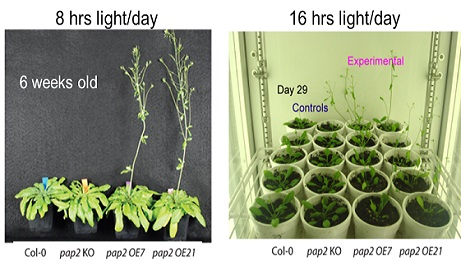
Boon Leong Lim
The University of Hong Kong, China
Title: Boosting bioenergy by coordinating the activities of chloroplasts and mitochondria
Biography
Biography: Boon Leong Lim
Abstract
Increasing yield has been the ultimate goal of Agrobiotechnology and Biofuel industry for many decades. Current agrobiotech traits mainly rely on preventing yield loss, such as insect-resistance, herbicide resistance and drought resistance. Here we would like to show that manipulation energy outputs of chloroplasts and mitochondria can enhance plant growth and seed yield significantly. Overexpression (OE) of a purple acid phosphatase (AtPAP2) in Arabidopsis results in faster plant growth and higher seed yield (+40-50%). The OE lines contain significant higher ATP and sucrose levels than the wild-type (WT). Subcellular localization studies showed that this phosphatase is anchored on the outer membranes of the two energy generating organelles of plants, chloroplasts and mitochondria. Our data show that AtPAP2 affects the energy output from these two organelles by modulating import of certain nuclear-encoded proteins into chloroplasts and mitochondria, and thus affect their energy harvesting and energy conversion efficiencies, respectively. Based on the data of chlorophyll fluorescence measurement, transmission electron microscopy, 2D Blue Native/SDS-PAGE analyses, enzyme assays, oxygraph measurement, and proteomics analysis, we proposed a model to explain how AtPAP2 enhances sugar and ATP production in leaf cells of Arabidopsis thaliana by simultaneously coordinating the activities of chloroplasts and mitochondria. Homologous sequence of AtPAP2 can be found in the genome of some green algae. Our discovery may open up a new direction for Agrobiotechnology and bioenergy research.

Recent Publications:
- R. Zhang, … B. L. Lim (2016) AtPAP2 modulates the import of the small subunit of Rubisco into chloroplasts. Plant Signaling & Behavior. 11:e1239687
- C. Liang, …, B. L. Lim (2016) Transcriptomic, proteomic and metabolic changes in Arabidopsis thaliana leaves after the onset of illumination. BMC Plant Biology 16:43.
- C. Liang, …, B. L. Lim (2015) Impacts of high ATP supply from chloroplasts and mitochondria on the leaf metabolism of Arabidopsis thaliana. Frontiers in Plant Science 6:922.
- Y. Law, …, B. L. Lim (2015) Phosphorylation and dephosphorylation of the presequence of pMORF3 during import into mitochondria from Arabidopsis thaliana. Plant Physiology 169:1344-55.
- C. Liang, …, B. L. Lim (2014) Global small RNA analysis in fast-growing Arabidopsis thaliana with elevated concentrations of ATP and sugars. BMC Genomics 15:116.
- F. Sun, …, B. L. Lim (2013) Global transcriptome analysis of AtPAP2 - overexpressing Arabidopsis thaliana with elevated ATP. BMC Genomics 14:752-763.
- F. Sun, …, B. L. Lim (2012) AtPAP2 is a tail-anchored protein in the outer membrane of chloroplasts and mitochondria. Plant Signaling & Behavior 7:927-932.
- Y. Zhang, … B. L. Lim (2012). Over-expression of AtPAP2 in Camelina sativa leads to faster plant growth and higher seed yield. Biotechnology for Biofuels 5:19-28.
- F. Sun, … B. L. Lim (2012) A dual-targeted purple acid phosphatase in Arabidopsis thaliana moderates carbon metabolism and its overexpression leads to faster plant growth and higher seed yield. New Phytologist 194: 206


